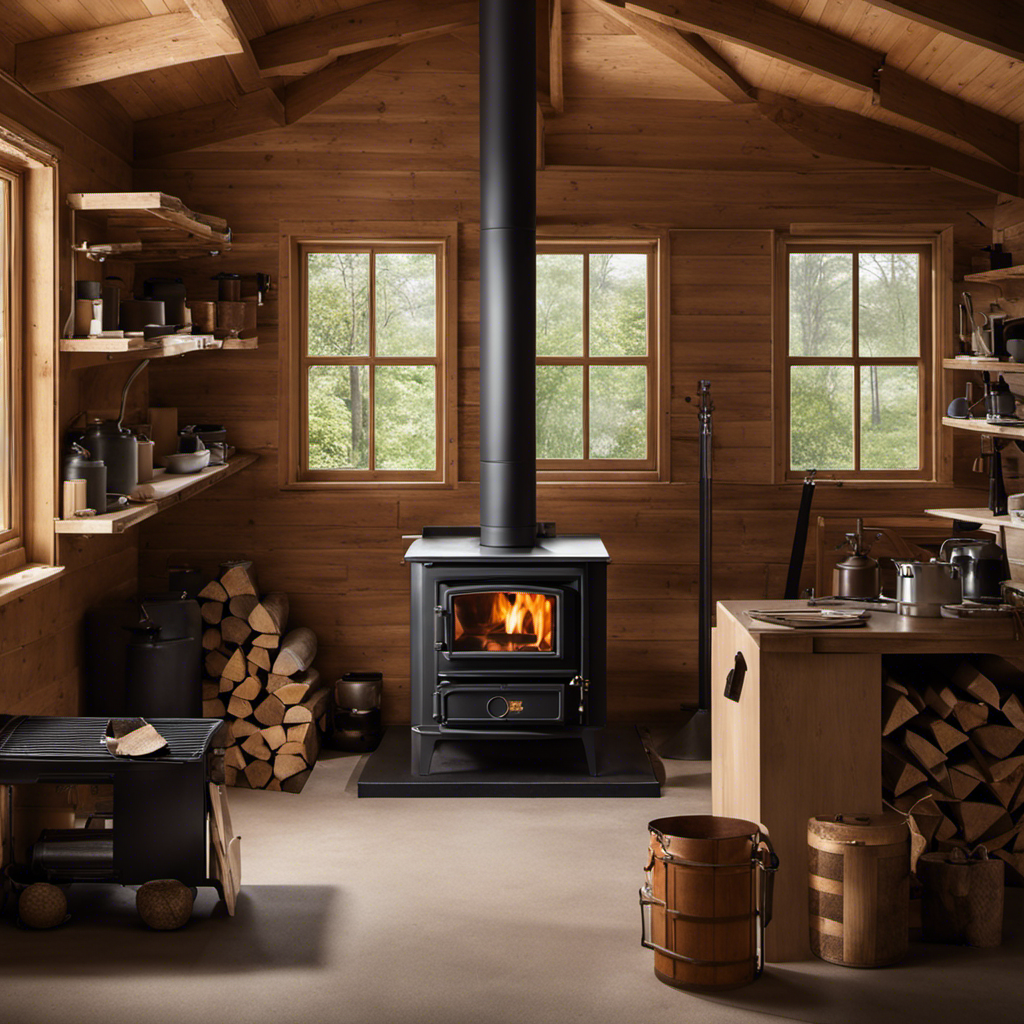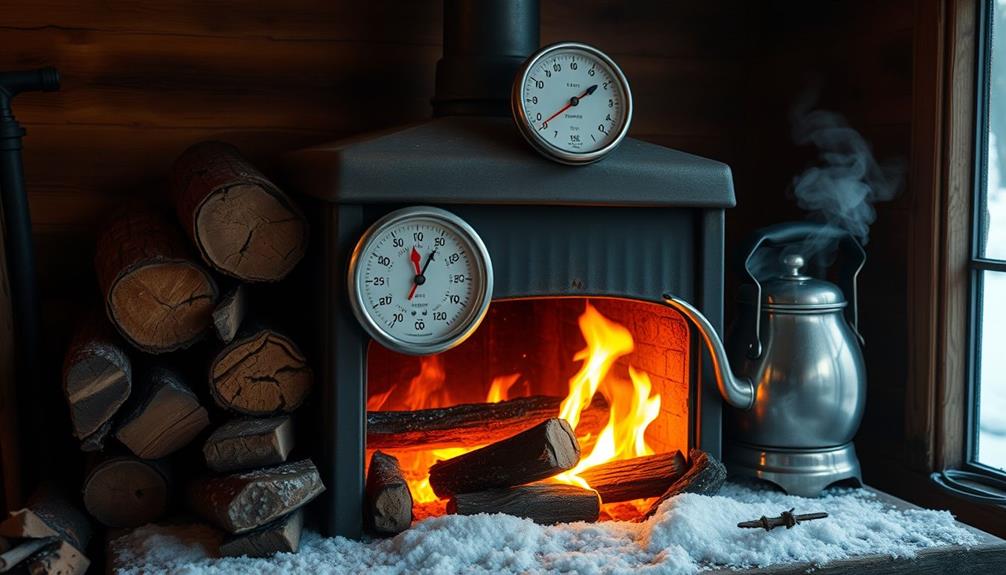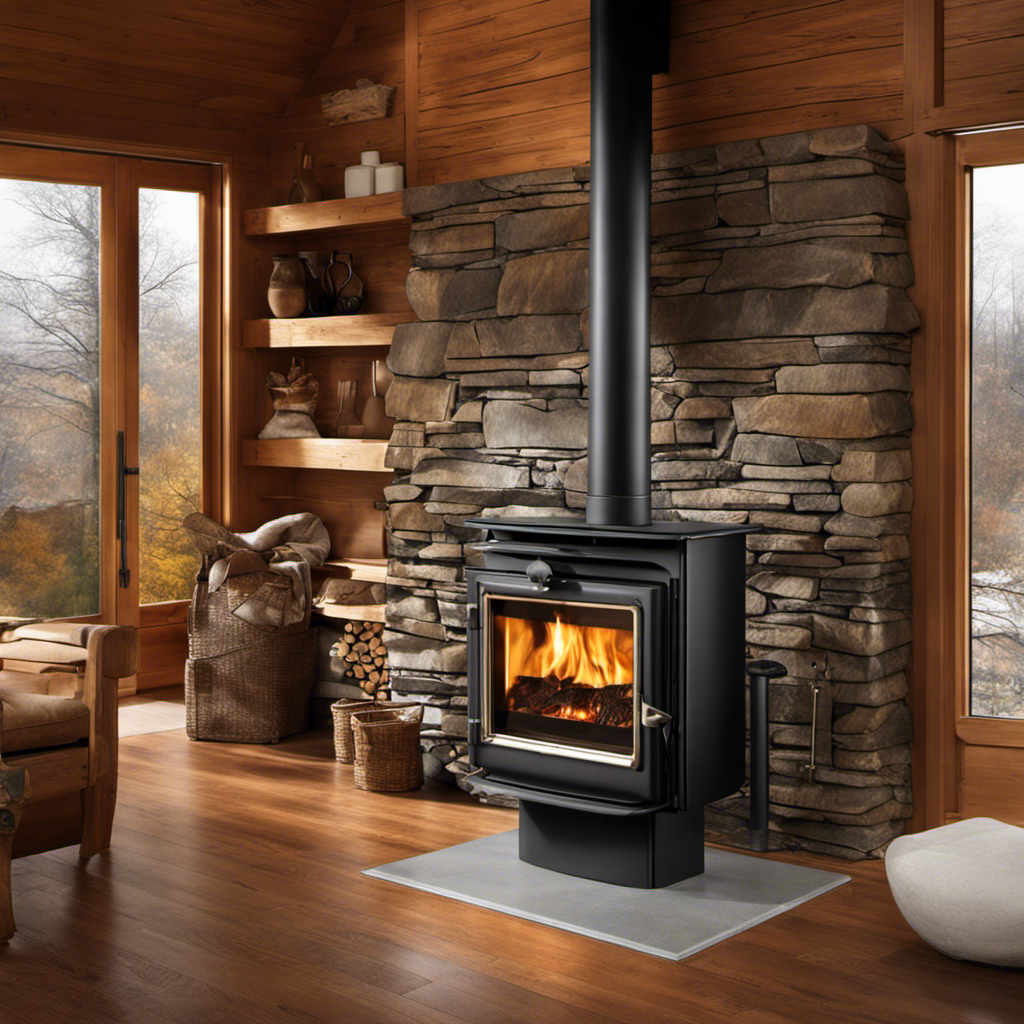I believed I had perfected the skill of maintaining wood stoves, until I faced a formidable opponent: soot. This stubborn foe appeared unbeatable, but I eventually uncovered the methods to achieving a pristine wood stove.
In this guide, I’ll share my tried and tested methods for banishing soot from your beloved wood stove. Get ready to restore its pristine condition and ensure cozy, efficient warmth for years to come.
Let’s dive in and reclaim your wood stove from the clutches of soot!
Key Takeaways
- Using the right cleaning solutions and protective gloves is crucial for safe and effective removal of soot and creosote buildup.
- Preparing the wood stove for cleaning includes removing debris and ashes, taking safety precautions, and maintaining regular cleaning to ensure optimal performance.
- Removing loose soot and ash involves sweeping, vacuuming, and wiping down surfaces to create a clean surface for thorough cleaning.
- Deep cleaning the wood stove requires removing grates, scrubbing them with a vinegar and water mixture, and thoroughly rinsing and drying them before placing them back.
Necessary Tools and Materials
I need a few necessary tools and materials to clean the soot from my wood stove.
Firstly, I’ll need some cleaning solutions specifically designed for removing soot and creosote buildup. These solutions are effective in breaking down the stubborn residue and making it easier to remove.
Additionally, I’ll make sure to have a pair of protective gloves to keep my hands safe from any chemicals or dirt that may be present during the cleaning process. These gloves will provide a barrier between my skin and the cleaning agents, preventing any potential harm.
It’s important to have the right tools and materials to ensure a thorough and safe cleaning of my wood stove. With the proper cleaning solutions and protective gloves, I can achieve just that.
Preparing the Wood Stove for Cleaning
The first step in preparing the wood stove for cleaning is to remove any debris or ashes from the interior. Before starting this process, it’s important to take some precautions to ensure safety.
First, make sure the stove is completely cool. Wear protective gloves and a mask to avoid any contact with the soot or harmful particles.
Once the stove is cool, use a shovel or brush to carefully remove any debris or ashes. It’s crucial to clean the stove regularly to maintain its performance. A buildup of soot and debris can hinder the stove’s efficiency and even pose a fire hazard.
Regular cleaning also helps to prevent any potential blockages in the flue, ensuring proper ventilation. By following these steps and taking the necessary precautions, you can keep your wood stove clean and functioning optimally.
Removing Loose Soot and Ash
To effectively clean the wood stove, I’ll start by carefully sweeping out the loose soot and ash using a brush and dustpan. This step is crucial in preparing the stove for a thorough cleaning. By removing the loose debris, we can create a clean surface to work with.
Once the sweeping is complete, it’s important to take the next step of vacuuming the remaining soot particles. Using a vacuum with a brush attachment, I can effectively remove any lingering soot from the stove’s interior.
After vacuuming, I’ll move on to wiping down the surfaces with a damp cloth. This will help eliminate any remaining dust and soot residue. Remember to use a cloth that’s slightly damp, not wet, to avoid introducing excess moisture into the stove.
Deep Cleaning the Wood Stove
After carefully sweeping out the loose soot and ash, I can now move on to deep cleaning the wood stove by removing the grates and scrubbing them with a mixture of vinegar and water.
Before starting this process, it’s crucial to take some safety precautions. First, make sure the wood stove is completely cool to avoid any burns. It’s also recommended to wear gloves and protective eyewear to protect yourself from any potential injuries.
To remove stubborn soot, mix equal parts vinegar and water in a spray bottle. Spray this solution onto the grates and let it sit for a few minutes to loosen the grime. Then, using a scrub brush, gently scrub the grates to remove the remaining soot. Rinse the grates thoroughly with water and dry them before placing them back into the wood stove.
Maintaining a Clean Wood Stove for Future Use
I usually clean my wood stove thoroughly after each use to ensure it stays in good condition for future use. Maintaining a clean wood stove is essential for its longevity and efficient performance. One of the primary concerns in wood stove maintenance is preventing soot buildup.
Soot is a result of incomplete combustion and can accumulate on the interior surfaces of the stove, affecting its efficiency and potentially causing safety hazards. To prevent soot buildup, regular cleaning is necessary.
Start by removing ashes and debris from the stove. Then, use a stiff brush or scraper to remove any soot deposits from the inside walls and grates. Finally, vacuum or sweep the stove’s surrounding area to eliminate any loose soot particles.
Regular maintenance and cleaning will ensure your wood stove stays in top-notch condition for years to come.
Conclusion
Cleaning soot from a wood stove doesn’t have to be a daunting task. By following these simple steps and using the right tools, you can easily remove the buildup and maintain a clean stove for future use.
Remember, a clean stove not only improves its efficiency but also ensures a cozy and enjoyable experience. So, grab your cleaning materials and get ready to banish that soot, because a spotless wood stove awaits you!
Growing up surrounded by the vast beauty of nature, Sierra was always drawn to the call of the wild. While others sought the comfort of the familiar, she ventured out, embracing the unpredictable and finding stories in the heartbeat of nature.
At the epicenter of every remarkable venture lies a dynamic team—a fusion of diverse talents, visions, and passions. The essence of Best Small Wood Stoves is crafted and refined by such a trio: Sierra, Logan, and Terra. Their collective expertise has transformed the platform into a leading authority on small wood stoves, radiating warmth and knowledge in equal measure.











